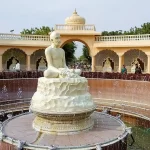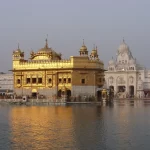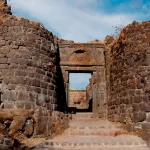Exploring Alamgir Mosque: Aurangabad’s Mughal Gem
Ready to step into Aurangzeb’s world? Let’s begin this journey—one dome, minaret, and historical whisper at a time.
🔴 Introduction: Discovering Aurangabad’s Hidden Mughal Gem
Aurangabad, a city steeped in the echoes of empires, is a living canvas of India’s multicultural legacy. Tucked away in its bustling lanes lies the Alamgir Mosque, a humble yet profound symbol of Mughal austerity and architectural ingenuity. Often overshadowed by the grandeur of the Taj Mahal, this mosque tells a quieter but equally compelling story—one of Emperor Aurangzeb’s unyielding devotion, minimalist ethos, and the cultural fusion that defines Maharashtra’s Deccan region.
In this immersive guide, we’ll journey through time and terrain to uncover every facet of the Alamgir Mosque. Designed for history enthusiasts, architecture buffs, and wanderlust-driven travellers alike, this article is your ultimate companion to understanding why this monument deserves a spot on your travel bucket list. Here’s what awaits you:
1. A Deep Dive into History:
✦ Discover how Aurangzeb’s reign shaped the mosque’s creation in 1693 as part of his fortified palace, Qila-e-Ark.
✦ Explore the emperor’s paradoxical legacy—a ruler who built modest mosques while waging wars to expand his empire.
✦ Learn why the mosque’s original name, Alamgir (“Conqueror of the World”), reflects Aurangzeb’s imperial ambitions.
2. Architectural Splendour Meets Simplicity:
✦ Decode the mosque’s blend of Mughal minimalism and subtle Hindu-inspired motifs, like Bangla-style cornices.
✦ Marvel at the absence of ornate embellishments—a stark contrast to Shah Jahan’s opulent creations—and what it reveals about Aurangzeb’s values.
3. Your Practical Travel Blueprint:
✦ How to Reach: Navigate seamlessly from Mumbai, Pune, or Hyderabad with road, rail, and air options.
✦ Best Time to Visit: Seasonal insights to dodge the summer heat or monsoon rains.
✦ Nearby Gems: Pair your visit with Aurangabad’s iconic Bibi Ka Maqbara or the vibrant Harsul Market.
4. Local Flavours and Cultural Immersion:
✦ Savour Aurangabadi cuisine, from spicy Naan Khaliya to saffron-kissed biryani.
✦ Shop for Himroo shawls and Bidriware crafts, or witness artisans preserving centuries-old traditions.
Also Read
Explore Akola, Maharashtra, India: History, Culture, and Cotton
Let’s unravel the legacy of this underrated Mughal monument!
🔘 History of the Alamgir Mosque: Aurangzeb’s Personal Sanctuary
Built in 1693 as part of Aurangzeb’s royal palace complex, Qila-e-Ark, the mosque served as the emperor’s private prayer space during his Deccan campaigns. Unlike his predecessors, Aurangzeb favoured simplicity over grandeur—a reflection of his pious lifestyle. The mosque’s location in Himayat Bagh underscores its role in the emperor’s daily life, away from the pomp of public monuments like the Taj Mahal.
🔘 Key Historical Notes:
✦ Aurangzeb renamed the city Aurangabad after becoming viceroy of the Deccan in 1636.
✦ The mosque’s original name, Alamgir, means “Conqueror of the World”, a title Aurangzeb adopted after ascending the throne in 1659.
✦ Unlike the Taj Mahal (built by his father Shah Jahan), the Alamgir Mosque cost little, aligning with Aurangzeb’s frugal policies.
🔘 Architecture: A Blend of Simplicity and Symbolism
The mosque’s design mirrors Aurangzeb’s practicality but retains classic Mughal elements:
👉 Triple Domed Prayer Hall: Three onion-shaped domes, with the central one elevated on a higher drum.
👉 Bangla Cornices: Curved roof edges inspired by Bengali temple architecture.
👉 Minarets and Mihrab: Two flanking minarets and a semi-circular mihrab (prayer niche) facing Mecca.
👉 Modest Proportions: Designed for private use, the mosque lacks ornate carvings, emphasising functionality over opulence.
🔘 Unique Features:
✦ Aurangzeb’s Stone Seat: A slab where the emperor reportedly copied the Quran.
✦ Wazu Khana: A green-tinted ablution pool added later for pre-prayer rituals.
🔘 Why This Mosque Matters
The Alamgir Mosque isn’t just a relic of the past—it’s a bridge between Aurangabad’s Mughal roots and its modern identity. Whether you’re tracing the footsteps of emperors, admiring understated artistry, or soaking in the city’s vibrant culture, this guide ensures you’ll leave with stories richer than any textbook could offer.
🔘 How to Reach Alamgir Mosque
From Major Cities:
✦ Mumbai: 330 km (6 hours by road; nearest airport: Aurangabad).
✦ Pune: 230 km (4.5 hours by road).
✦ Hyderabad: 560 km (10 hours by road).
✦ Delhi: 1,200 km (flight/train recommended).
🔘 Local Transport:
✦ Auto-rickshaws or taxis from Aurangabad Railway Station (4 km).
✦ Walkable from Chhatrapati Shivaji Museum (500 meters).
🔘 Best Time to Visit & Weather:
✦ Ideal Months: October–March (cool, dry weather; 15°C–28°C).
✦ Monsoon: July–September (lush greenery but slippery pathways).
✦ Summer: April–June (hot; up to 40°C).
🔘 Nearby Tourist Attractions:
👉 Himayat Bagh: Mughal-era gardens adjacent to the mosque.
👉 Qila-e-Ark Ruins: Remnants of Aurangzeb’s fortified palace.
👉 Bibi Ka Maqbara: “Poor Man’s Taj”, a tomb built by Aurangzeb’s son.
👉 Chhatrapati Shivaji Museum: Showcases Maratha and Mughal artefacts.
👉 Rangeen Darwaza: A vibrantly decorated gate from Aurangzeb’s era.
🔘 Local Experiences in Aurangabad
Markets & Handicrafts:
✦ Harsul Market: Silver jewellery and Himroo textiles (traditional brocade).
✦ Gul Mandi: Spices, Paithani sarees, and Bidriware metal crafts.
Food to Try:
✦ Naan Khaliya: Mughal Mutton curry with flatbread.
✦ Aurangabadi Biryani: Fragrant rice dish with local spices.
Cultural Vibes:
✦ Festivals: Celebrate Eid at the mosque or attend the Aurangabad Film Festival.
✦ Local Lifestyle: Blend of Maratha resilience and Mughal heritage.
Uncover Aurangabad’s Mughal secrets—share this guide with fellow history buffs and start planning your trip today!
🔘 FAQs About Alamgir Mosque
Is there an entry fee?
No, it’s free for all visitors.
Can non-Muslims enter?
Yes, but avoid prayer times and dress modestly.
Are cameras allowed?
Yes, but seek permission from the Dar-Ul-Amaan Trust.
What’s unique about its architecture?
The fusion of Bengali cornices and Mughal minimalism.
🔘 Conclusion: A Testament to Aurangzeb’s Legacy
The Alamgir Mosque is more than a relic—it’s a window into Aurangzeb’s austere reign and Aurangabad’s layered history. Pair your visit with explorations of Bibi Ka Maqbara and Himayat Bagh for a full Mughal immersion.
🔘 Sources:
👉 Wikipedia: Alamgir Mosque, Aurangabad
- Aranya Devi Temple – Arrah, Bihar: Where Mythology Meets Modern Devotion

- Anjaneri Hill – Nashik, Maharashtra: Where Myth Meets Majesty

- Anand Sagar, Shegaon, Maharashtra – A Spiritual Oasis Blending Serenity & Adventure

- Aga Khan Palace – Pune’s Monument of Freedom and Legacy

- Attari Sham Singh Railway Station – A Historic Gateway to Punjab’s Heritage

- Amritsar, Punjab: A Timeless Tapestry of Spirituality, History, and Cultural Grandeur





